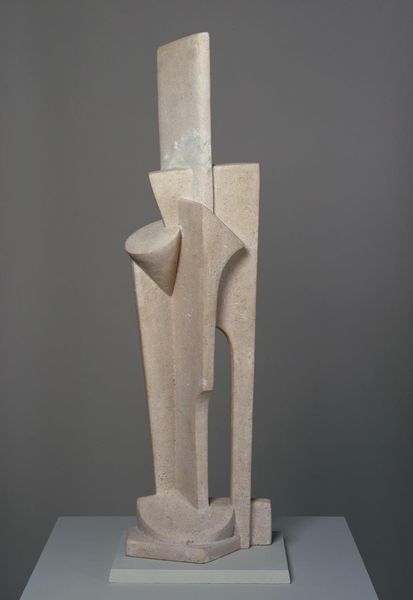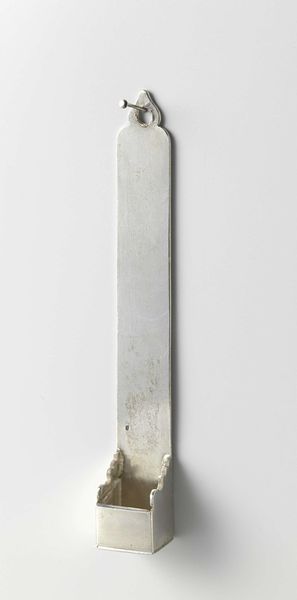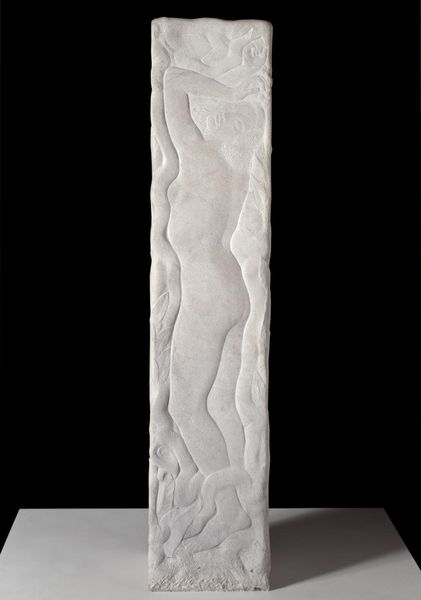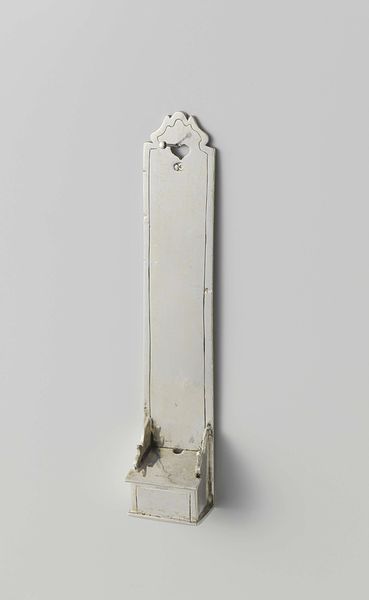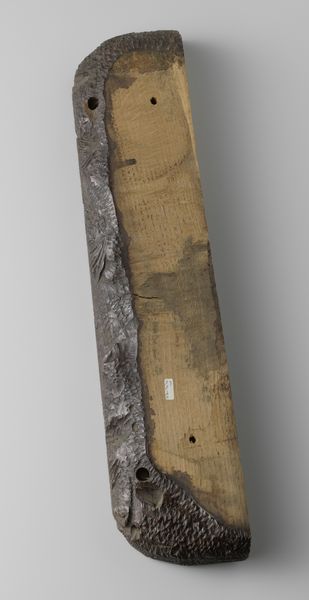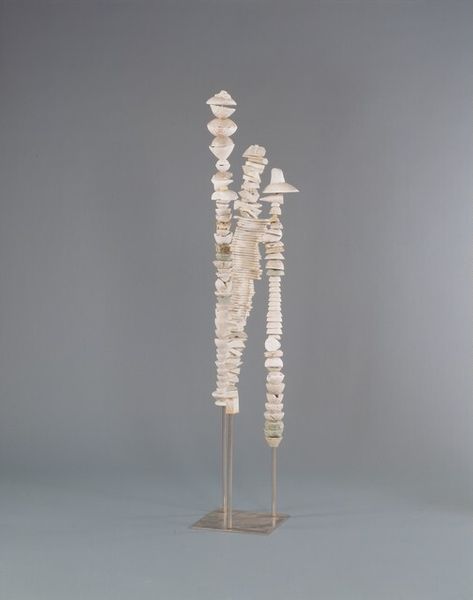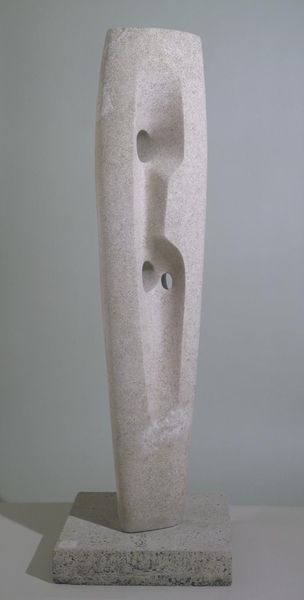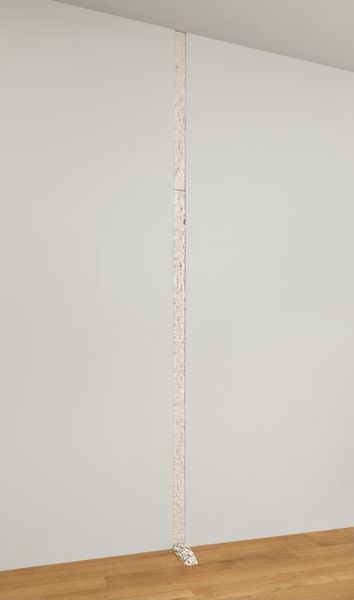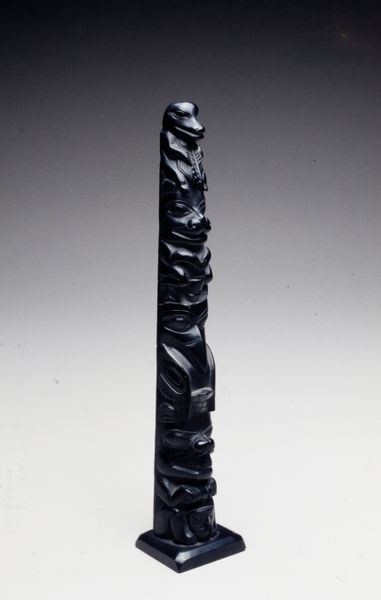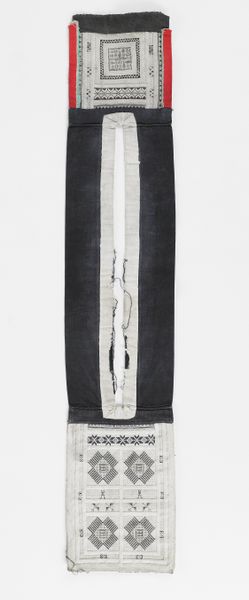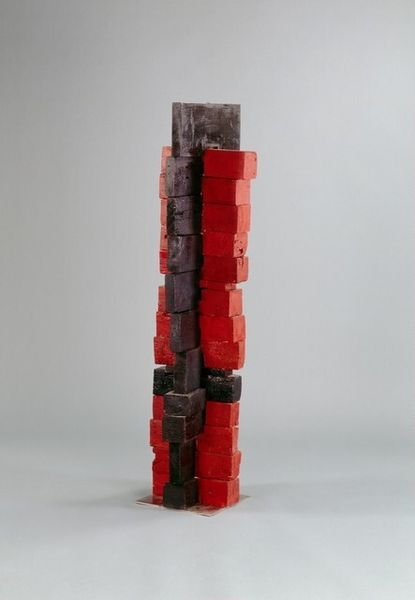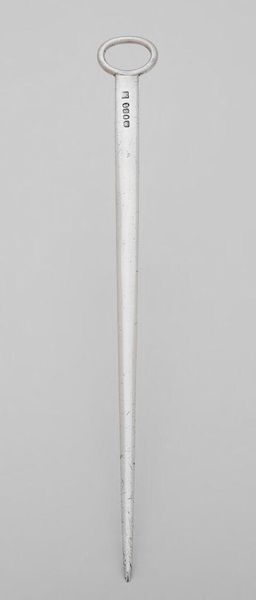
carving, bronze, sculpture, wood
#
cubism
#
carving
#
sculpture
#
bronze
#
geometric
#
sculpture
#
abstraction
#
wood
Copyright: Public domain US
Curator: What strikes you immediately about this sculpture? For me, it’s Jacques Lipchitz's "Figure" from 1915—a piece that encapsulates early 20th-century explorations of form and space through Cubism. Editor: The starkness. It's almost confrontational. The geometric forms piled one upon another remind me of precarious building blocks. Is it meant to evoke a sense of instability? Curator: Instability, perhaps, but also a revolutionary act of deconstruction. Lipchitz, working within the Cubist movement, dismantled traditional representations of the human figure. It is key to understand how spaces for art redefined the viewers. Editor: You’re right; that becomes evident with the sharp angles, its texture—the ways the planes catch and deflect light. It denies a single, fixed perspective, inviting viewers to move around it, consider its many faces. What role do materials play here? Curator: Lipchitz often worked in bronze and wood, and understanding the shift between these materials tells us how these were perceived through class, access and privilege. Carving became a key element in challenging dominant art, and how they are related with societal perception and the use of abstraction, as well as rejecting past forms of art to make room for what was coming. Editor: Absolutely, the abstraction speaks volumes about the era's anxieties and ambitions. Considering that its a bronze carving, does that change the artwork reception for the society? How can it be interpreted differently through modern feminist perspective? Curator: Feminist perspective brings out critical ideas about power, representation, and social change and understanding gender dynamics in this context opens more diverse discussions. It also challenges the lack of space for gender identity outside dominant roles. Editor: Well, Lipchitz's "Figure" offers endless questions and prompts a continuing examination of both art and our shifting cultural landscapes. Curator: Precisely. And understanding Lipchitz's work requires that constant conversation, always evolving as our societies change.
Comments
No comments
Be the first to comment and join the conversation on the ultimate creative platform.
